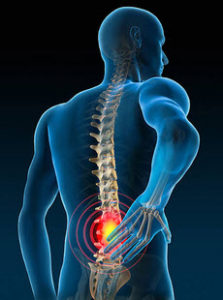Introduction:
Sciatica, a common form of back pain affecting around 40% of individuals at some point, demands attention for both relief and prevention. Unraveling its triggers is paramount. Here’s a concise guide to understanding and managing sciatic nerve pain effectively.
Key Takeaways:
- Sciatica affects around 40% of people during their lifetime, often causing recurring bouts of pain.
- Understanding the triggers of sciatic nerve pain is crucial for prevention and management.
- Stress, weight, walking and sitting incorrectly, tight clothing, and a sedentary lifestyle can exacerbate symptoms.
- Proper diagnosis and tailored treatment plans, including chiropractic care and physical therapy, can alleviate sciatic nerve pain.
What triggers sciatic nerve pain?
Sciatic nerve pain can be triggered by factors like stress, weight, incorrect walking or sitting posture, tight clothing, sedentary lifestyle, and pregnancy-related changes.
Sciatica is one of the more common types of back pain. If you are experiencing the symptoms, finding a way to restore your comfort and movement will be a priority. Nonetheless, prevention is always the best form of protection, which is why understanding what triggers sciatic nerve pain should be high on the agenda too. Studies show that sciatica affects around 40% of people at some stage in their life, with many experiencing recurring bouts. You can regain control of your back health and help prevent associated leg pains with the following advice.
How To Know You Have Sciatica
When you experience pains stemming from the lower back, an accurate diagnosis is an essential first step for finding the right treatment or pain management program. Sciatica knee pain symptoms are caused by compression of the sciatic nerve, which subsequently places an extra load on the muscles, tendons, discs, and nerves.
Some key issues that will separate it from other conditions are;
- Symptoms can be felt in the bottom, lower legs, and feet.
- Symptoms include pins and needles, numbness, shooting pains, and dull pains.
- The issues subside after around six weeks, but return.
The good news is that there are several potential treatments for sciatica, ranging from physical therapies to medications. However, understanding what activities aggravate sciatic nerve pain may be the key to reducing symptoms and preventing their return.
What Triggers Sciatic Nerve Pain?
The compression of the sciatic nerve, which consequently causes sciatica symptoms, is caused when something rubs and irritates the nerve. It is most commonly caused by slipped or herniated discs, but can also be linked to other issues like;
- The narrowing of the spine at the point where nerves pass (spinal stenosis),
- A spinal bone slipping out of position (spondylolisthesis),
- Sporting injuries, work accidents, and other incidents that damage the back.
An appreciation of those underlying causes of sciatica is vital information. It is equally crucial to know what triggers sciatic nerve pain so that you can take the necessary steps to prevent additional damage. The key issues are listed below:
- Stress : You probably know that stress is a common trigger for many health complaints, and sciatica is no different. Emotional stress causes the brain to stop providing enough oxygen to the nerves, which consequently leads to numbness, weakness, or pins and needles. The legs, feet, and toes are the most likely areas to feel this sensation. Therefore, you must place an extra emphasis on trying to reduce stress from your daily life. You won’t eliminate stress from your life completely, but significant reductions will ease symptoms. Both in terms of frequency and strength.
- Weight : Compression of the sciatic nerve can stem from placing too much pressure on the back. If you are overweight, each extra pound will cause 4 lbs of pressure on the back. Naturally, then, getting your weight under control can be a particularly useful way to reduce the risk of sciatica. Light exercises that strengthen muscles and aid flexibility can work wonders too. It should also be noted that the risk of sciatica grows with age. It is very rare for anyone under 20 to experience it unless through an injury. If you are a little older, the preventative benefits of losing any excess weight are simply incredible.
- Incorrect Walking : Walking can be an effective way to reduce the symptoms of sciatica. However, anyone searching for what activities aggravate sciatic nerve pain may be surprised to learn that a poor stride could actually worsen your symptoms. If you walk with a hunched back or too much curvature of the lower back, correcting this issue must become an instant goal. Slower walking, deep breathing, and wearing the right footwear are all vital steps. Avoiding high heels is particularly important as they actively encourage your weight to lean forward, causing an imbalance from the pelvis to cause added sciatic nerve pressure.
- Incorrect Sitting : As well as walking in an imbalanced way, sitting incorrectly can have a detrimental impact that triggers sciatic nerve pain. Commonly referred to as “back pocket” , sitting at your desk while sitting on your wallet or other objects will place pressure on the piriformis muscle. This can trigger sciatic nerve pain because the nerve runs underneath it. This is perhaps the most regularly overlooked trigger of sciatica because millions of people do it without thinking. It is one of the main reasons that around 40% of sufferers end up experiencing chronic pain. Treat this issue by moving your items to reduce the symptoms.
- Tight Clothes : It makes sense that ill-fitting shoes will cause problems due to the impact on your natural stride. However, it is also shown that tight clothes may potentially place added strain on the back and the sciatic nerve. As such, opting for loose-fitting items may offer some benefits by avoiding the development of symptoms. It may also reduce the strength of symptoms. The research into this concept remains somewhat limited. Nonetheless, the suggestion that looser jeans and underwear could reduce some of the discomfort is something that anyone who experiences sciatic nerve pain should embrace with open arms.
- Sedentary Lifestyle : A sedentary lifestyle is another common cause of sciatic nerve pain. This is because prolonged sitting causes intervertebral disc damage. In turn, compression and irritation of the sciatica nerve become more likely. This is another reason why the traditional pain management advice of bed rest may not work as well as once thought. Finally, pregnant women should be aware of back spasms caused by a condition known as piriformis syndrome. This is caused by the growing fetus. When combined with changes to the woman’s weight and pelvis, irritation of the sciatic nerve can occur.
Treating Sciatica
Avoiding sciatica is always the preferred route to success. But if you experience signs of sciatica, it will be necessary to find the right chiropractic care for sciatic nerve pain. Orthopedic Surgery, Interventional Pain Management, Physiatry, Cardiology, Physical Therapy, Acupuncture, Functional Medicine, Chiropractic Care, Pilates, Nutrition, and Massage Therapy are some of the potential solutions.
A successful diagnosis is the first step to finding the right treatment. Here at OC Wellness, our experts work with you to identify the source and severity of your sciatic nerve pain before establishing an action plan to treat the condition and prevent further problems.
Take the first step to regaining control by calling us today.
Also Read – Is Walking Good for Sciatic Nerve Pain?
Recent Blogs
Why Physical Therapy Should Be Your Secret Weapon Before Surgery
Surgery, while sometimes necessary, can be a daunting prospect. The recovery process is often lengthy and filled with unknowns. But what if there was a way to optimize your body's readiness for surgery and [...]
Spinal Decompression Therapy: A Non-Surgical Option for Herniated Discs
The discs in your spine act as cushions between the vertebrae, providing flexibility and absorbing shock. When the outer wall of a disc weakens or tears, the soft inner core can bulge or push [...]
PRP for Knees_ A Promising Option for Pain Relief and Mobility – word
For many people, knee pain is a constant companion, limiting mobility and impacting quality of life. Traditional treatments like pain medication and physical therapy can offer relief, but they may not address the underlying [...]





